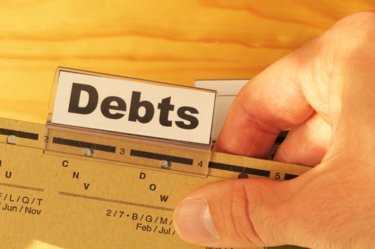
Bond defaults are something of an uneasy subject for fixed income investors. Obviously, the goal would be to pick out an issue from an issuer that will not default on its promise, but things are not always quite that simple. Sometimes unforeseen circumstances, or simply poor management, lead to an issuer defaulting on its debt, leaving a number of investors out to dry. Below, we take a look at what exactly happens when a bond defaults and how you as an investor should handle the situation.
What Is a Bond Default?
Let’s start at the most basic level. A bond default is when an issuer is no longer able to make payments on the notes they issued. This is typically due to bankruptcy or other financial burdens impacting the entity that issued the bond. In some cases, a portion of all of the debts may be repaid, and in other (more rare) cases, debts are unable to be repaid at all. The nature of the default is different depending on the type of issuer [see also A Brief History of Bond Investing].
For instance, a government default would be a monumental event, as it means an entire country is unable to make good on its debts. This is the rarest form of a default, but it still happens from time to time. Investing in U.S. government debt is considered among the safest investments in the world, as the likelihood of the U.S. defaulting is extremely rare. Although the past few years have certainly tested the latter point.

For corporate issuers, a default, albeit rare, is not as uncommon as with government defaults. Prior to actually defaulting on the debt, many corporations will file for bankruptcy protection under Chapter 7 or Chapter 11.
Chapter 7 bankruptcy occurs when a firm ceases operations and goes out of business. From there, a court will appoint a trustee to oversee and determine how the assets are liquidated and how debtors are paid out. Circuit City is an example of a company that filed for Chapter 7 bankruptcy in 2009. In that particular case, the company had originally filed for Chapter 11 protection but converted to Chapter 7 after a bidder to buy the company could not be found [check out our High-Yield Bond Funds].
Chapter 11 bankruptcy is more complex, as it allows for the company to continue to operate, but it is shielded from creditors. The approval to file Chapter 11 bankruptcy must be determined by a court. Blockbuster is an example of a company that successfully filed for Chapter 11 bankruptcy in 2010.
In both forms of bankruptcy filings, companies are typically forced to restructure and reorganize.
Municipal defaults are often on a project basis, as many of these debt offerings are used to fund infrastructure initiatives like roadways and sewers, among other things. Projects like these can turn out to be more costly than what was originally predicted and there can be a number of unforeseen issues when it comes to construction, which can force some to default on their debts.
Municipalities can file for Chapter 9 bankruptcy to help them restructure their debts. One of the most prolific examples of such an action came in mid-2013 when the city of Detroit, Michigan filed for Chapter 9 bankruptcy protection, becoming the largest city in the history of the U.S. to ever do so.
Overall, the rate of default on municipal bonds is relatively low, especially on those that are given high ratings by the credit agencies.
Below, we outline three famous examples of various defaults from around the fixed income world:
Long-Term Capital Management and the Russian Financial Crisis

In 1998, Russia endured a crushing financial crisis as its currency rapidly devalued and the government defaulted on a number of debts. To give you an idea of how severe the crisis was, the Russian stock market lost approximately 75% of its value between January and August of 1998.
That default had a ferocious impact on Long-Term Capital Management, a massive, Connecticut based hedge fund that included none other than Myron S. Scholes (of the famed Black-Scholes model) on its board of directors. A number of factors, including the Russian default, came together to bring this famed hedge fund to its knees, causing the fund to lose $4.6 billion in value in just four months. The Federal Reserve eventually had to step in to help stop the bleeding, but the damage had been done and the fund liquidated all of its assets and dissolved in early 2000.
China and the Shanghai Chaori Solar Energy Default
Early in 2014, China saw its first corporate default in nearly 20 years, as Shanghai Chaori Solar Energy failed to make good on an 89 million yuan payment ($14.5 million). It was also the first onshore bond default that the country had ever seen, giving it an added significance. This sparked a wave of worry over other Chinese corporations and created something of a scare in the Chinese fixed income world.
The Washington Public Power Supply System Default
On the municipal side of things, the Washington Public Power Supply System defaulted back in 1983 as the project had been poorly planned. The issue was for construction on a nuclear power plant, but costs quickly sailed beyond projections and redesigns combined with declining demand for the power source, ultimately creating this scenario.
Bondholders were able to receive approximately 40% of their principal and interest, but that would take nearly a decade.
The Bottom Line
All-in-all, a bond default is something of a rarity, no matter what kind of entity issued the debt. In most cases, the entity will repay portions of the debt, but the timeline on the repayment is difficult to predict and can take years if not longer. Investors can protect themselves by carefully checking the ratings and credit statuses of fixed income investments prior to taking a position as well as keeping a careful eye on any kind of developments concerning their debt.






